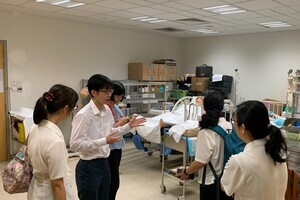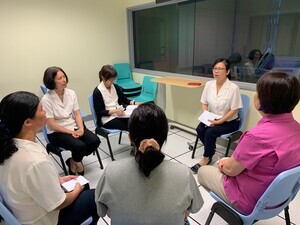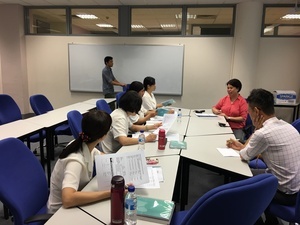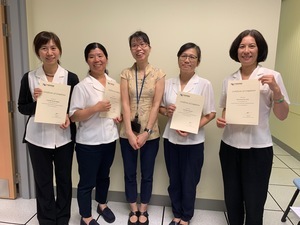Simulation-based learning(Nanyang Technological University)(2019)




The main purpose of "Simulation-based learning" is to consider "patient safety" and achieve this goal by improving the quality of medical care. "Simulation education" in medicine and nursing education has been developed abroad for many years. To learn the realistic situation teaching and standardize the software and hardware systems used by patients in nursing curriculum design, lesson plan design, situation script design, evaluation method, setting up the realistic situation teaching center, etc. On July 22, four teachers from the nursing department went to Singapore's sister school "Nanyang Technological University" for a practical study in a simulation center of the nursing department.
The workshop will include two days of workshops and hands-on training at the simulation center. Course content: how to integrate the simulated situation teaching into the curriculum, the curriculum design, the application theory of teaching methods, the design of situation teaching plans, how to construct the software and hardware equipment of the "simulation education center", the staffing of the education center (teachers, general engineers, and computer engineers), and a visit to the first qualified simulation education center certified by the international simulation education center in southeast Asia, "the medical simulation education center in the academic building of Singapore central hospital".
"Realistic situation teaching" is mainly the application of "Learning via cycles of action & feedback". Learning objectives apply to the teaching of communication, conflict management, care, and ethical issues. The material is presented as a screenplay, possibly with the student acting as an actor or a simulated patient acting as a character, two as a caregiver, and the others as an observer. By performing the roles, presenting the perspectives, and guiding the reflection, the learning process touches the students to ponder, think, internalize, express, and connect with life experiences, emotions, and values. The key to teaching effectiveness and learning objectives is teachers' reflection and feedback after scenario script compilation and observation.
The teaching method of "realistic situation teaching" will also design different Scenarios and computer-aided teaching according to different learning objectives. In the software part, in addition to some teaching software equipment, the preparation of engineers is also necessary. Because computer-aided instruction in virtual situations is necessary, by simulating the AV system in the ward, students in the observation room, engineers, and teachers in the control room can observe immediate and direct responses of nursing staff or standardized patient performance. Moreover, Low or high-fidelity manikins or standard patient role-playing models may be used in the setting of situational teaching plans. Engineers and computer engineers are mainly responsible for computer-aided instruction. Its work content includes: maintenance simulation of patients, and for the script set to make-up or computer programs and other techniques to achieve the script to be true. In the simulation teaching, the engineer not only manages all AV systems and changes some patients' physiological data according to the virtual situation. The engineer should also take the post of stimulating the patient's voice behind the scenes. He/she needs to make an immediate and reasonable response to the student's performance at that time and the actual situation. If necessary, he/she should discuss with the teacher and make adjustments.
However, it does take a lot of effort to build a "simulation education center" in the training of hardware and software equipment and personnel, For teachers teaching, the pressure of teaching will increase. For students, the pressure of attending classes will also increase, and their chances of learning from virtual situations will also increase, thus strengthening clinical intelligence, professional attitude, judgment, and self-confidence to both the quality of medical care and patient safety. However, it cannot be denied that "simulation education" has become a trend in the development of nursing education. The design of the school curriculum and the mode of clinical education must be adjusted accordingly.
